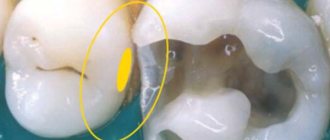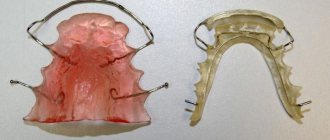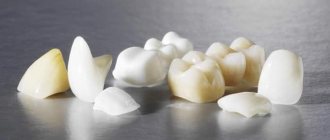1838
The mandible (from the Latin Mandibula) is the lower jaw of vertebrates. If we talk about people, the LF plays an important role not only in performing the functions of the dentofacial apparatus (chewing, swallowing, speaking), but also in ensuring the aesthetics of the lower third of the face.
The shape of the edges of the jaw body, the size and severity of the cervical-mental angle affects the beauty and expressiveness of our face, and its perception by others. And who among us is indifferent to the impression we make on other people?
General overview
Mandibuloplasty is an aesthetic operation that involves correcting the shape of the edges of the body and the size of the lower angle of the jaw.
To make it clear what we are talking about, we will provide some general information.
The human mandible consists of the following elements:
- body (the curved part on which the alveolar ridge with teeth is located);
- 2 branches directed upward and forming a cervical-mental (lower) angle with the body;
- articular processes crowning the upper parts of the branches.
Surgeries on the lower jaw are divided into two types:
- Orthognathic, aimed at eliminating dentofacial anomalies that lead to disruption of the functionality of the dentofacial apparatus (for example, lengthening or shortening of the jaw body).
- Mandibuloplasty.
If a patient with a dental anomaly requiring surgical intervention consults a doctor for mandibuloplasty, orthognathic surgery is performed first, followed by mandibuloplasty.
In cases where combined surgery is possible, orthognathic correction and mandibuloplasty are performed simultaneously.
The following types of mandibuloplasty are distinguished.
- Reducing the angles of the lower jaw.
- Increased angles of the lower jaw.
- Correction of the shape of the edge of the body of the bass.
The mandibuloplasty strategy consists of increasing or decreasing the volume of bone in certain areas of the jaw body, and involves resection (removal), reposition (movement) of bone tissue or installation of implants.
In the most difficult cases, a combination of these operations is used. As a result of mandibuloplasty, the lower part of the face acquires expressiveness and beauty, a feature that can be called “chiseling.” Beautiful people are said to have “chiselled” facial features.
In recent years, cartilage implants have been used. They are made from the patient's own cartilage using tissue engineering methods. Thanks to their “kinship” with the patient, they are absolutely compatible with his body and are completely integrated into the jaw.
Such implants do not “dissolve”. Their volume and shape are preserved for life, as is the result of the entire operation.
Reference. As an alternative to mandibuloplasty, contour plastic surgery is used, which is the injection of fillers under the skin. The use of contour plastic surgery is limited to a small area of correction and a temporary effect.
After about a year, the fillers “dissolve” and a repeat operation is required. The main advantages of this type of correction are low invasiveness and affordable price.
Why does the jaw click when chewing and how to eliminate the unpleasant symptom.
Come here if you are interested in how to correct a shift in the midline of your teeth.
At this address https://orto-info.ru/zubocheliustnye-anomalii/chelyustey/krivaya-ne-prigovor.html we will find out whether it is possible to correct a crooked upper jaw.
Alternatives to Bone Grafting
There are 2 technologies in dentistry that do not involve building up bone tissue for implantation:
- The All-on-4 protocol is recommended for fixed prosthetics in edentulous clients. It is possible to carry out work even with minimal bone height, since all implants are installed at different angles. The technology is performed without bone grafting in 99% of cases.
- Basal implantation is carried out using a complex technology that involves fixing implants in the basal layers of bone tissue at the maximum depth. This layer has enormous strength and rarely atrophies over time. The technology is universal and suitable for installing a bridge or local missing teeth
As a rule, both technologies are implemented in one visit to a specialist. The use of the All-on-4 protocol makes it possible to fix a horseshoe-shaped bridge consisting of 12-14 teeth on 4-6 implants.
Indications and restrictions
The indication for mandibuloplasty is, first of all, the patient’s desire to improve, in his opinion, the aesthetics of his face, which is not high enough, which can be caused by the following reasons:
- Defects of the mandibular angles. Hypo- or hypertrophy of the cervical-mental angle, its deformation, asymmetry.
- Deformation of the edge of the LF body. Curvature, asymmetry, etc.
- Malocclusion – distal, mesial, cross, frontal open, deep. In addition to disrupting aesthetics, malocclusions have a negative impact on the functionality of the dentofacial apparatus - they reduce the efficiency of chewing and impair the functions of swallowing and speech.
- Chin defects. Asymmetry, too massive protruding or too small, receding with smoothing of the lower angle (“bird” profile). Chin plastic surgery has its own name – genioplasty.
Contraindications to mandibuloplasty are all cases in which any surgical intervention cannot be performed:
- Impaired hemostasis (blood formation), including due to medication.
- Oncological diseases - not specifically in the oral cavity.
- Serious chronic diseases of internal organs.
- Endocrine disorders.
- Pregnancy, lactation.
- Acute infectious diseases.
- Age up to 22-25 years (maxillofacial bones must be fully formed).
Types of mandibuloplasty performed
After correcting the bite,
operations to correct the shape of the lower jaw include the following areas:
- resection (reduction of angles);
- implantation (jaw enlargement);
- correction of shape (change of contours).
There is another method of correction, carried out using so-called fillers - fillers injected using a cannula or syringe. Many experts do not classify it as contour plastic surgery. To radically change the shape of the chin, the optimal way is full-fledged plastic surgery.
Preparatory activities
The general goal of preparatory procedures for mandibuloplasty is to reduce surgical risk and minimize the likelihood of postoperative complications.
Activities begin with an initial consultation, during which the doctor assesses the type and severity of functional and aesthetic disorders, listens to the patient about his problem, intentions and expectations from the operation, informs him about the features and possible results of the operation.
This is followed by diagnostics - facial anthropometry, X-ray studies in the necessary projections (OPTR, teleradiography, targeted images), CT. Based on their results, the volume of bone tissue in the surgical area, the nature of occlusion, and malocclusion are assessed. A treatment plan is drawn up.
If there are concomitant malocclusions that cannot be corrected during mandibuloplasty, the patient may be indicated for orthognathic surgery to correct them.
An important stage of preparation is computer modeling , the purpose of which is to select the optimal surgical strategy, predict its results, and determine the size of the implant.
Before operations, laboratory and instrumental examinations of the patient’s health are also carried out - urine and blood tests (general and biochemical), a coagulogram (to assess blood clotting), bacteriological studies for the presence of viral infections, an electrocardiogram, etc. If required, doctors from other countries are involved in the diagnosis specialties.
15-20 days before surgery, stop taking medications that affect blood clotting. NSAIDs may also be prohibited . It is important that the doctor knows about all medications the patient is taking. If among them there are those that negatively affect hemostasis, the doctor will inform the patient that their use should be stopped for a while.
The length of the preparatory stage is about 7-10 days.
Contraindications
You cannot perform surgery on the jaw tissue if:
- immunological pathologies;
- low blood clotting;
- malignant tumor neoplasms;
- severe diseases of the cardiovascular system.
The intervention will not be possible if the patient is allergic to dental anesthetics. The procedure is quite painful and cannot be performed without anesthesia.
Stages of implementation
Before starting the operation, the doctor must have a ready-made implant. It is made from the patient’s autogenous bone or cartilage tissue (taken from the auricle or rib). The latter option is preferable to bone; a cartilage implant cannot be resorbed and is easier to form.
The most modern material is solid silicone, which lasts a lifetime and is absolutely safe for the patient.
The operation is performed under general anesthesia. Access to the bone is carried out through the mucous membrane of the oral cavity or from the outside, through the skin. Percutaneous access is used when neck rejuvenation is performed simultaneously with mandibuloplasty.
Moreover, the latter is ensured not only by greater tension of the soft tissues, but also by improving the contour of the lower jaw and the cervical-mental angle.
If there is no need for rejuvenation and tension of the skin, incisions are made in the oral cavity and implants are inserted through them. The operation lasts about an hour or less, and ends with stitches and a tight bandage on the jaw.
Rehabilitation period
The bandage lasts for about a week or the exact time determined by the doctor. In some cases, it is removed at the time of discharge, which usually occurs the next day after surgery.
The first days after mandibuloplasty, swelling persists, the patient experiences moderate pain, which intensifies when talking and chewing food.
The normal position is one in which swelling persists for a week. If it does not decrease, or even increases, you should consult a doctor.
To reduce pain and swelling, cold compresses are used, anti-inflammatory drugs, analgesics, and rinsing with antiseptic solutions are prescribed. Stitches are usually removed on the eighth to tenth day.
Particular attention is paid to diet. The composition of the products does not change, but the structure and temperature of the food changes. It should be predominantly liquid and at body temperature.
Eating cold and hot foods can lead to pain. Solid foods, the chewing of which requires strong tension in the masticatory muscles, should be avoided so as not to cause displacement of the implant.
The duration of the rehabilitation period depends on the type of operation, its traumatic nature (volume of surgical intervention), the age and general health of the patient. It usually takes about 2 months.
During rehabilitation, it is necessary to refrain from heavy physical activity and not expose yourself to high temperatures.
The final conclusion about the results of mandibuloplasty is made in about six months.
What methods can be used to correct a small lower jaw in men and women?
In this publication, we will consider modern methods of expanding the dentition in children.
Here https://orto-info.ru/zubocheliustnye-anomalii/chelyustey/ukorochenie.html all the most important things about shortening the upper dentition.
What difficulties can you encounter after surgery on the lower jaw?
Osteoplasty can vary from minor manipulations in limited areas to major transplantation of bone blocks. Its success depends not only on the professionalism of the doctor, but also on the actions of the patient. Any mistakes during the intervention and during the recovery period after it lead to complications. Then the wound begins to hurt and fester. The bone frame may be rejected.
Gum swelling is not a complication. It occurs in everyone in the first three days, and then gradually decreases. It should be treated as a natural reaction to the engraftment of the transplanted specimen. Sometimes small hematomas appear. They shouldn't be scary either. If you have any questions, you should consult a dental surgeon. The doctor will examine you and tell you if everything is okay.
Under no circumstances should you massage the inflamed gum, touch it with any objects, or carry out rinses that were not prescribed by the doctor. Even the simplest manipulations, not coordinated with a specialist, can result in rejection. If the patient follows medical prescriptions and properly cares for the wound, he should not experience any difficulties at the regeneration stage.
Possible complications
Swelling and moderate pain are considered normal after surgery. But if they do not go away within a week, and/or some other symptoms of trouble appear (for example, bleeding), this is a sufficient reason to consult a doctor
The most common complications:
- decreased sensitivity, numbness in the lower jaw, lasting more than a week (the reason is usually pinched nerve endings due to swelling and the presence of an implant);
- bleeding;
- implant displacement – can occur in the first days after surgery;
- infection at the surgical site.
In all of the above cases, the patient must consult a doctor to identify the cause and carry out the necessary treatment measures.
Benefits of bone grafting
During implantation, bone loss occurs, which can be avoided with plastic surgery.
After surgery, the body experiences stress, and most importantly, it begins to work differently. While eating, there is no load on the jaw, so the bone tissue gradually disappears. Standard dentures do not solve the problem, but only create unnecessary stress on neighboring teeth. To solve the problem 100%, you need to install an implant. It will improve your smile, maintain your health, and also prevent the development of complications after tooth loss. Bone grafting completely eliminates atrophy of the jaw bones even in adulthood.
Price issue
As a rule, the cost of mandibuloplasty indicated by clinics in their price lists includes all costs associated with the operation:
- initial and subsequent examinations;
- expenses associated with the patient's stay in the hospital (food, provision of a robe, towel, slippers, hygiene kit);
- anesthesia and the operation itself;
- dressings;
- postoperative procedures and rehabilitation monitoring.
The cost of the operation is influenced by the type and complexity of the surgical intervention, the technology used, the general health of the patient, which may require additional procedures, the pricing policy of the clinic and its location.
In general, the entire mandibuloplasty procedure may require the patient to pay from 100 to 250 thousand rubles. In some cases, even more.
The video provides additional information on the topic of the article.
Preparation for surgery:
During the preliminary examination, the plastic surgeon decides together with the patient what result they want and can (depending on the initial data) achieve. The doctor evaluates the condition of the jaw, bone density, degree of deformation, discusses the intervention technique, and gives recommendations on preparing for plastic surgery. In special cases, the doctor may request an additional X-ray of the jaw or an orthodontist’s report. If a person smokes, it is advisable to reduce the number of cigarettes per day if possible - for faster and easier rehabilitation.
Chin reduction or enlargement, as well as other corrections, are performed under general anesthesia and the patient will need to undergo a comprehensive preoperative examination, including blood, urine, and ECG tests.










